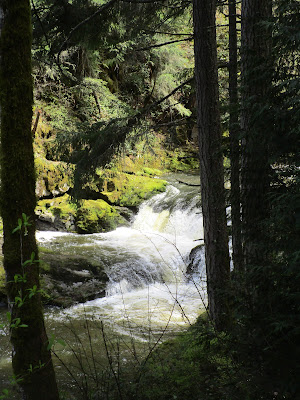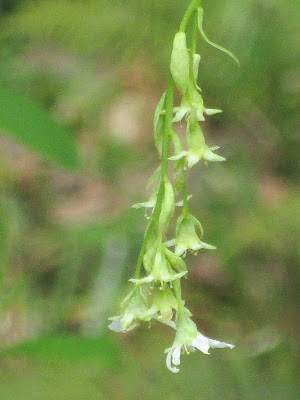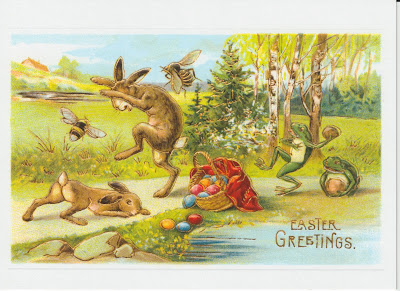Bob hung up the cross-country skis a couple of weeks ago. There is still quite a bit of good snow and some of the alpine ski areas are open, so he will squeeze in at least one more downhill day. I am done until next ski season.
It is time to get out the hiking gear and try out my new boots. Last year I discovered that my boots were worn out, the company is no longer making that boot, and I needed to find something new. My son recommended Zamberlan boots since he and I both have narrow feet and Zamberlan boots tend to fit narrow feet better than most other brands. Warning, these boots are expensive. They fit marvelously well and were comfortable from the first day. Two weeks ago, we did a test walk at the Arboretum and last week another test at Washington Park in Anacortes for the annual Happy Hikers Spring Fling, hike (walk) and pot luck lunch. Success!
River and part of one of the newer bridges
A different view of a newer bridge across the river
This week was the real boot test. Bob chose a 4.5 mile RT hike to see some waterfalls and hopefully also find early flowers in bloom. The Bud Blancher Trail is located near Eatonville and not too far from Mt. Rainier National Park. The first 1.4 miles of the trail are newer with gravel surface and two wide, sturdy wood bridges that cross the Mashel and Little Mashel Rivers.
There were a couple of these small wood bridges over creeks
Rocks and more rocks on the trial
The trail changes to packed dirt, and mud this time of year, with not many roots but lots of small to medium sized rocks. Note: It is downhill from the trailhead parking lot, where there is plenty of parking space and no pass is required, to the beginning of the trail. It might be a slog uphill at the end if one is tired. There is a port-a-potty at the parking area. However, there are public restrooms with flush toilets less than a mile away in the town of Eatonville at the visitor center and also at the community center.
Lots of muddy places
The first newer section of the trail is wide and almost level with just a gradual incline. The trail upward through the woods is very steep in places and the day we went there were several large mud pits. A young couple we met as we were going up and they were coming down, passed along the tip to avoid the lower falls since the steep trail down was not in good shape, filled with mud, and had eroded stairs. The young man said he slid and fell in the mud, warned us to be careful and to perhaps consider just doing the middle and upper falls instead of attempting the lower one. When we got to the turn off to the lower falls it looked extremely steep, that plus the threat of slips and falls encouraged us to take their advice and continue on up the main trail to the middle and upper falls skipping the lower falls.
The middle falls have the longest drop down, 92 ft
The middle falls were spectacular. The water levels are high and the rushing torrent of water not only roared but came crashing down the 92 ft drop in a wide curtain of water. There are stairs down, and some people had gone all the way down, but once again the trail needs maintenance and the dirt stairs were not in great condition. We opted to stay at the top where there were good viewing spots.
Bob climbed own to take photos of the upper falls
The upper falls have two drops, this one is the first drop
The second drop of the upper falls
From the middle falls we continued up to the Upper Falls. There are several off-shoot trails along the way, one of which goes down to a view point below the upper falls. We saw some people down there where only the bottom section of the upper falls is visible. We stayed on the main route and were able to see both sections of the upper falls. Bob climbed down to get some good closer photos and a little of the cooling spray, while I remained at the top and took pictures from the various view spots.
Bob's photo of the quiet small pond. Note one of several benches placed around the pond.
On the way to the falls we walked past this small pond that had picnic tables and benches plus a large parking lot. On the return trip we stopped there and and I sat and rested while Bob took some pictures.
Not only did we see beautiful waterfalls, there were dozens, perhaps even hundreds, of trillium in bloom, also Salmon berry, and a few other things . In a couple more weeks there will be more flowers.
Salmon berry
Trillium
Indian Plum
Red Currant
Count for the day: 60 people, includes 3 babies being carried, and one young child, 8 dogs.
4.5 mile RT, 560 ft elevation gain

























